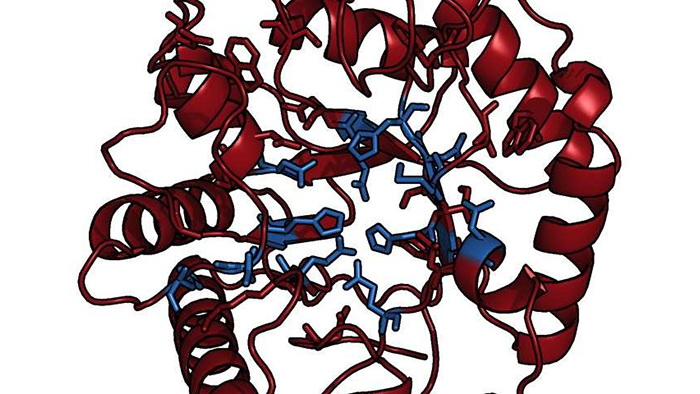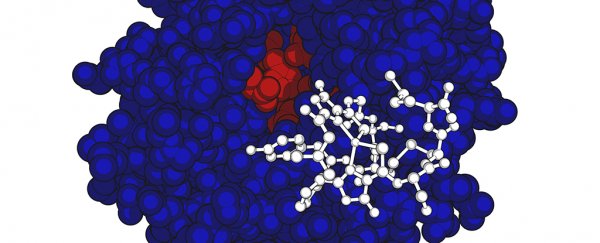Methanotrophic bacteria are air-cleaning champions among microbes in the way they can absorb both a key greenhouse gas and heavy metals from the environment, and now scientists have gained new insight into the way they work.
Two never-before-studied proteins, called MbnB and MbnC, have been identified as being partially responsible for the inner workings of these bacteria – helping to pull off the physiological processes that could make methanotrophs useful allies in the battle to fight back against climate change.
And once we have have a better understanding of how these bacteria work, we can better adapt them to take on some serious environment-cleaning duties, and even treat medical conditions, according to the team of researchers behind the study.
 MbnB protein structure. (Amy Rosenzweig Lab, Northwestern University)
MbnB protein structure. (Amy Rosenzweig Lab, Northwestern University)
"Our findings extend far beyond methanotrophic bacteria," says one of the team, Amy Rosenzweig from Northwestern University in Illinois. "These two proteins are found in a range of other bacteria, including human pathogens."
Here's why MbnB and MbnC are important: they're responsible for producing the modified peptide called methanobactin that in turn enables the bacterial cells to pull in copper from the surrounding environment.
The copper is then used as fuel to pull methane into the methanotroph and convert it into methanol for food. That process is what makes such bacteria so interesting to scientists, and MbnB and MbnC start the whole chain reaction off.
Together with higher levels of carbon dioxide, an increasing amount of methane in the atmosphere is a key driver of global warming. It comes from natural sources as well as the oil and gas industries.
Scientists are currently weighing up the options for using methanotrophic bacteria to help guard against future rises in methane levels, as well as a potential source of renewable energy, converting methane into fuel.
What's more, because methanobactin binds to copper so tightly, methanotrophs have also been put forward as a possible way of treating Wilson's disease, a rare genetic disorder where the body can't properly process the traces of copper found in food. New probiotics made from the bacteria could be on the table too.
That's still some way and many more studies off at this point, but the new research also looks like it could improve our knowledge about other types of bacteria as well.
Thanks to the identification of MbnB and MbnC and the processes they're involved in, scientists should be able to better predict which species of bacteria produce certain varieties of methanobactin.
"The involvement of a metal-requiring enzyme in forming these types of chemical groups is unprecedented, and neither of the two proteins have been studied previously," says Rosenzweig.
"Moreover, similar enzymes seem to be produced in other contexts, suggesting that this chemistry is important beyond the production of methanobactin."
The research has been published in Science.
